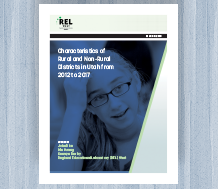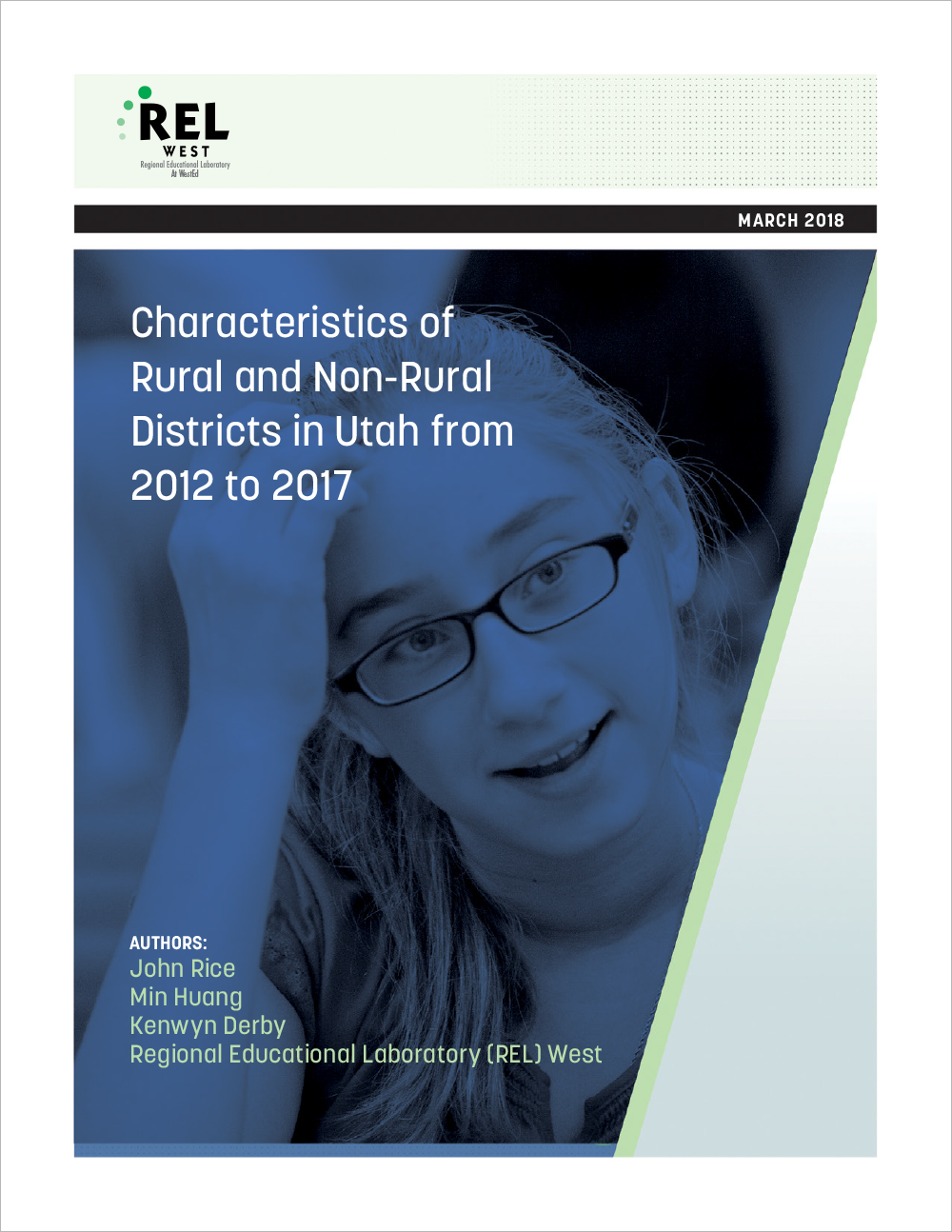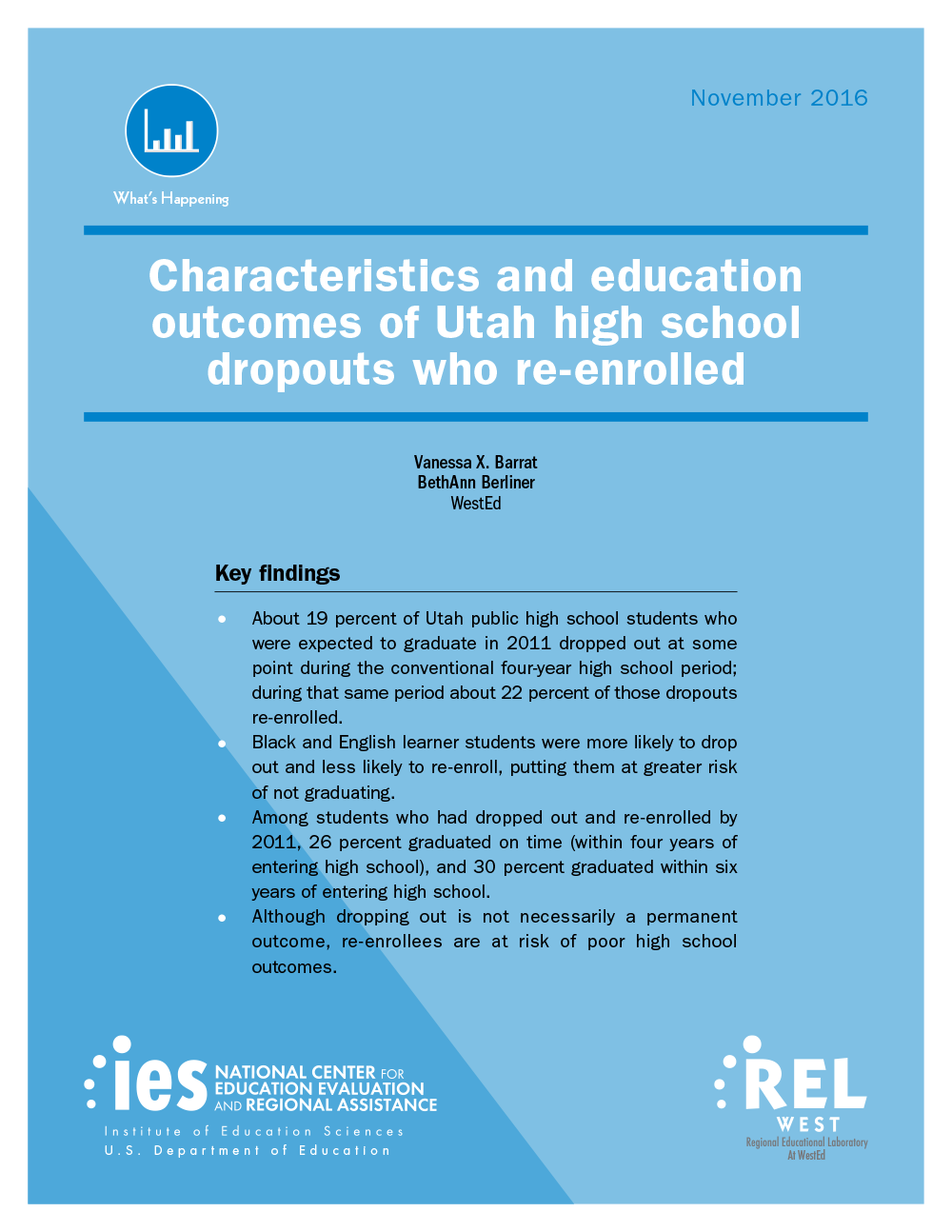New REL West Report Looks at Characteristics of Rural and Non-Rural Districts in Utah
Posted on

The Utah State Board of Education (USBE), the Utah Rural Schools Association, and the Utah School Superintendents Association are interested in the differences in characteristics between rural and non-rural districts in their state, particularly differences pertaining to teachers, students (including academic outcomes), revenues, and expenditures.
To help inform Utah’s education stakeholders, this REL West study examines the differences in characteristics between rural and non-rural districts in the state from fiscal year 2012 through fiscal year 2017 using administrative data from the USBE and the Utah Education Association.
The study found that rural and non-rural school districts differed on a number of dimensions, some of which point to advantages for rural districts compared to non-rural districts.
One key finding: Compared to non-rural districts, rural districts had a smaller percentage of classes taught by highly qualified teachers, and the average four-year graduation rate was slightly higher.



